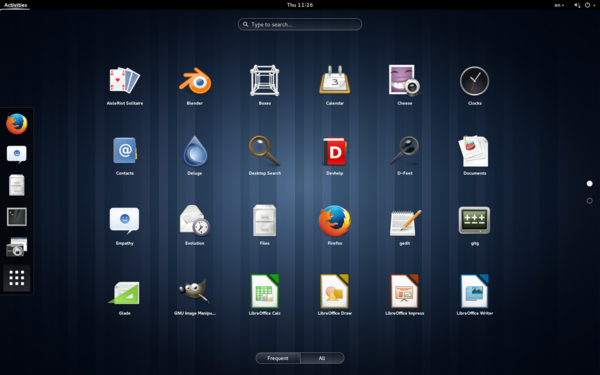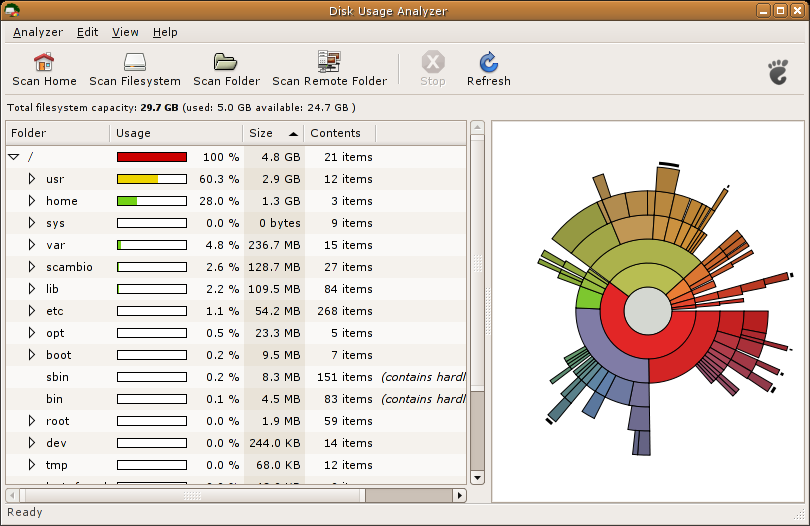Made by Red Hat Enterprises. Freely Distributed . Most Beautiful User Interface you could ever use. Honestly, the best competitor for Microsoft and Apple desktop users if people start using it.
Network Manager
Network Manager is a set of co-operative tools that make networking simple and straightforward. Whether Wi-Fi, wired, bond, bridge, 3G, or Bluetooth, Network Manager allows you to quickly move from one network to another: once a network has been configured and joined, it can be detected and re-joined automatically the next time its available.Pain-Free Networking
Networking
on Linux can be painful, especially in comparison to other operating
systems. You should never need to use the command line or configuration
files to manage your network (unless you want to!); everything should
"Just Work" as automatically as possible and never stop you from doing
what you want to do. Network Manager attempts to make networking as invisible as you want it to be. Whether at home, work, or on the move, Network Manager automatically connects to the last network you told it to connect to. From wired to wireless to mobile broadband to Bluetooth, Network Manager has you covered.
Flexible, Extendable, Open
The most important pieces of Network Manager
are user-interface and distribution agnostic, functioning just as well
in Gnome, KDE, Xfce, embedded devices, etc., and across distributions
like Fedora Core, Ubuntu, SuSE, Debian, Gentoo, and others. And since
the Network Manager
components communicate with each other using dbus, it's easy to to build
network-aware applications with languages like C, C++, and Python, or
network-aware scripts in your favorite shell.
Application Integration
Using the awesome power and flexibility of dbus, udev, and Modem Manager, Network Manager provides facilities for other applications like browsers, email clients, or system services to be aware of the network's state and adjust their operation accordingly. If you're not online or on your metered mobile broadband connection, your computer probably shouldn't try to update itself. With Network Manager, software knows where it is and how it's connected.Disk Usage Analyzer
No more space on your hard drive? Where did the gigabytes and megabytes go? The disk usage analyzer examines your hard drive and provides interactive graphs to help you figure out which folders are wasting your space and helps you clean them out.GNOME Power Manager
GNOME Power Manager is a session daemon for the GNOME desktop environment that makes it easy to manage your laptop or desktop system.These pages are meant to help you find information about GNOME Power Manager.
GNOME Power Manager is written in C, and has additional dependencies of:
Power Management Introduction
Power management is an essential job on portable computers, and becoming more important on todays high-powered desktops. It uses many complex (and sometimes experimental) parts of the system - each of which are slightly different, and may contain quirks to work around. The power management policy could be influenced and tweaked by an huge number of options, and each new laptop model brings more possibilities and options. This should all work in the background without even being noticed by the user.For example modern machines allow a many options to reduce power consumption:
- Reduce CPU frequency
- Switch off the harddrive if not needed
- Dim the display when the machine is idle

- Sleep to RAM (Suspend)
- Sleep to Disk (Hibernate)
- Shutdown
- Blank screen
Shotwell
Features
- Import from disk or camera
- Organize by time-based Events, Tags (keywords), Folders, and more
- View your photos in full-window or full screen mode
- Crop, rotate, color adjust, straighten, and enhance photos
- Slideshow
- Video and RAW photo support
- Share on major Web services, including Facebook, Flickr, and YouTube















